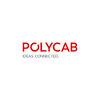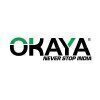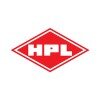
i
Medha Servo Drives
Filter interviews by
Medha Servo Drives PCB Layout Design Engineer Interview Questions and Answers
Medha Servo Drives PCB Layout Design Engineer Interview Experiences
1 interview found
(1 Question)
- Q1. Very normal questions and basics
(1 Question)
- Q1. Salary details and past work experience
Interview Preparation Tips
Top trending discussions






Interview questions from similar companies

I applied via Naukri.com and was interviewed in Nov 2020. There were 5 interview rounds.
Interview Questionnaire
2 Questions
- Q1. What exp. U have?
- Q2. I told him about my exp.
Interview Preparation Tips
If u r experienced then it will be from your relevant work and from desired profile for which you want to join the company.
Be geniune while interviewing, be original tell actual thing if u know or dont know .
make some basics brushed up of your core subjects only.

Design Engineer Interview Questions & Answers
CG Power and Industrial Solutionsposted on 19 Mar 2015
Interview Questionnaire
2 Questions
- Q1. Why should we select u.... How r u better than others.
- Ans.
I have the necessary skills, experience, and passion to excel in this role.
I have a strong background in design engineering with a proven track record of success.
I am highly skilled in using various design software and tools.
I am a quick learner and can adapt to new technologies and processes easily.
I am a team player and can work collaboratively with others to achieve common goals.
I am passionate about design engineer...
- Q2. Simple basic technical questions...
Interview Preparation Tips
Tips: Be confident... Never lie @ personal interview.
Round: Technical Interview
Tips: Study atleast 2 subjects thoroughly....
Skill Tips: Keep smiling...
Keep in mind that u r better than the rest
Skills: Confidence
College Name: NIT BHOPAL

Project Engineer Interview Questions & Answers
HBL Power Systemsposted on 30 Sep 2023
I appeared for an interview in Mar 2023.

General aptitude quantitative
(2 Questions)
- Q1. Electrical fundamentals
- Q2. Transformers , star and delta connections
Interview Preparation Tips

I applied via Campus Placement and was interviewed in Feb 2024. There was 1 interview round.
(3 Questions)
- Q1. What is difference between first projection and third projection?
- Ans.
First projection is a front view of an object, while third projection is a side view.
First projection shows the front view of an object, while third projection shows the side view.
First projection is typically labeled as 'F' on engineering drawings, while third projection is labeled as 'T'.
First projection is used to show the overall shape and size of an object, while third projection is used to show the depth and heig
- Q2. Ask about last year project.
- Q3. Tell me about yourself?
Interview Preparation Tips
Skills evaluated in this interview

I applied via Naukri.com and was interviewed in Jan 2022. There were 5 interview rounds.

Questions from general knowledge apti
(1 Question)
- Q1. Technical questions related to work and study
(1 Question)
- Q1. Technical+ Aptitude+software all concluded in this round
(1 Question)
- Q1. Salary discussion, company details etc
Interview Preparation Tips

Design Engineer Interview Questions & Answers
Amber Enterprises Indiaposted on 3 Apr 2023
I applied via Referral and was interviewed before Apr 2022. There were 2 interview rounds.
Basic aptitude test for any bachelor's or master's student
(3 Questions)
- Q1. 1. Basic questions about HVAC
- Q2. 2. Basic questions about design in general
- Q3. 3. Basic questions about plastic design and software test (UG NX)
Interview Preparation Tips
Would learn alot about plastic design.
Would learn alot about HVAC cycle

Senior Design Engineer Interview Questions & Answers
C&S Electricposted on 23 Sep 2023
I applied via Approached by Company and was interviewed in Aug 2023. There were 3 interview rounds.

(5 Questions)
- Q1. Question on steel structure design and analysis
- Q2. What is compression members?
- Ans.
Compression members are structural elements subjected to axial compressive forces.
Compression members are used in buildings, bridges, and other structures to support loads in compression.
Common examples include columns, struts, and trusses.
The design of compression members involves considerations such as buckling, stability, and material strength.
- Q3. What is tension members?
- Q4. Moment connection
- Q5. Slenderness ratio and codes used
- Ans.
Slenderness ratio is a measure of a structural element's stability under compression, and codes such as ACI, AISC, and Eurocode are commonly used in design.
Slenderness ratio is the ratio of the effective length of a column to its radius of gyration.
Different codes have different criteria for slenderness ratio limits to ensure structural stability.
Examples of codes used for slenderness ratio calculations include ACI (Am...
Design and analysis of supporting steel structure
Interview Preparation Tips

I applied via Campus Placement and was interviewed before Jul 2021. There were 2 interview rounds.

(4 Questions)
- Q1. What are different types of cables
- Ans.
Different types of cables include coaxial, twisted pair, fiber optic, and USB.
Coaxial cable is used for cable TV and internet connections
Twisted pair cable is used for Ethernet connections
Fiber optic cable is used for high-speed data transmission over long distances
USB cable is used for connecting devices to a computer
- Q2. What did you do during internship
- Ans.
During my internship, I worked on various engineering projects and gained hands-on experience in project management, design, and problem-solving.
Assisted in designing and implementing engineering solutions for clients
Collaborated with a team to develop project plans and timelines
Conducted research and analysis to support project decision-making
Participated in site visits and inspections to assess project progress
Prepar...
- Q3. Types of transformers, basic principles of transformers working
- Ans.
Transformers are electrical devices that transfer energy from one circuit to another through electromagnetic induction.
Transformers are of two types - step-up and step-down transformers
The basic principle of transformer working is electromagnetic induction
The transformer consists of two coils - primary and secondary
When an alternating current flows through the primary coil, it creates a magnetic field which induces a v...
- Q4. Working of induction motor
- Ans.
An induction motor works on the principle of electromagnetic induction to convert electrical energy into mechanical energy.
Consists of a stator and a rotor
Stator has a set of coils that produce a rotating magnetic field
Rotor is made up of conductive bars and is placed inside the stator
The rotating magnetic field induces a current in the rotor, which in turn produces a magnetic field
The interaction between the two magne...
Interview Preparation Tips
- basics of electrical engineering
- Transformers
- Motors

Aptitude+ Technical
(1 Question)
- Q1. Engineering Questions, Technology, Technical Knowledge, Projects, Training, Communication Skills, Leadership, Primary, Secondary, Business, Skill, Distributor Handling, Scouting.
Interview Preparation Tips
Medha Servo Drives Interview FAQs
Tell us how to improve this page.
Medha Servo Drives Interviews By Designations
- Medha Servo Drives Service Engineer Interview Questions
- Medha Servo Drives Technical Assistant Interview Questions
- Medha Servo Drives R&D Engineer Interview Questions
- Medha Servo Drives Technician Interview Questions
- Medha Servo Drives Graduate Engineer Trainee (Get) Interview Questions
- Medha Servo Drives Technician Fitter Interview Questions
- Medha Servo Drives ITI Electrician Interview Questions
- Medha Servo Drives Engineer Trainee Interview Questions
- Show more
Interview Questions for Popular Designations
- Analog Layout Engineer Interview Questions
- Layout Design Engineer Interview Questions
- Analog Layout Design Engineer Interview Questions
- Layout Designer Interview Questions
- Design Engineer Interview Questions
- PCB Design Engineer Interview Questions
- PCB Designer Interview Questions
- Mechanical Engg. Design Interview Questions
- Show more
Interview Questions from Similar Companies
Fast track your campus placements
Medha Servo Drives PCB Layout Design Engineer Reviews and Ratings
based on 1 review
Rating in categories
|
Service Engineer
250
salaries
| ₹1.8 L/yr - ₹8 L/yr |
|
Junior Engineer
187
salaries
| ₹3 L/yr - ₹6.5 L/yr |
|
Technical Assistant
118
salaries
| ₹1.8 L/yr - ₹7.2 L/yr |
|
Engineer
101
salaries
| ₹3 L/yr - ₹12 L/yr |
|
Assistant Engineer
73
salaries
| ₹4.5 L/yr - ₹9 L/yr |

Havells

Polycab Wires

CG Power and Industrial Solutions

C&S Electric
- Home >
- Interviews >
- Medha Servo Drives Interview Questions >
- Medha Servo Drives PCB Layout Design Engineer Interview Questions














